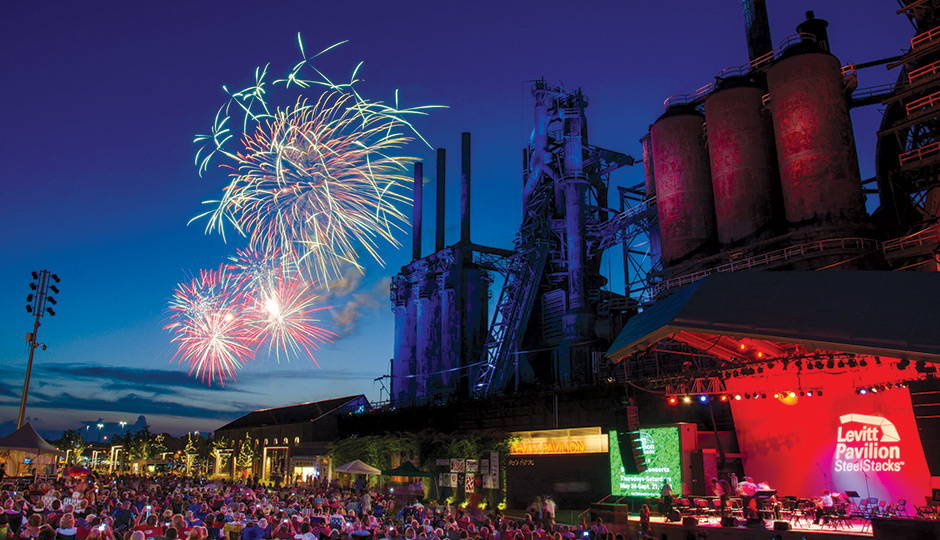Steel Magnolia
John Callahan, a 44-year-old natural salesman turned preternatural politician, looks down at the small plate of tuna crudo on the table. Fork poised, he considers the unlikelihood that he would be sampling such a dish in a swank new Italian restaurant on the main drag of the traditionally working-class ethnic enclave called the South Side in his hometown of Bethlehem, Pennsylvania.
“Who’da thunk it,” he says, with a rapid-fire wheezy chuckle. He spears an olive-oil-drenched nubbin of raw fish. “I often tell people: This is not your grandfather’s — hell, it’s not your father’s — town of Bethlehem.”
If he walked out the front door of Molinari Mangia, Callahan, who recently ended a decade as Bethlehem’s mayor, could peer toward the hulking 20-story blast furnaces that were once the hot heart of Bethlehem Steel, a premier industrial powerhouse of the last century. For much of that century, into the 1990s, those belching furnaces — “convoluted structures that look like smoke-stained dinosaurs snorting into the sky,” in the words of one writer — delivered a daily reassuring signal to the city of 75,000. As long as what locals called “The Steel” was working, so was Bethlehem.
But The Steel, reeling from foreign competition, plagued by myopic management and hamstrung by its unions, shut down the furnaces in 1995. The company spiraled into bankruptcy and finally dissolution. The city lost its namesake company, and a fifth of its taxable land devolved into an unused brownfield site, transformed almost overnight into a Rust Belt relic facing an existential crisis: What do you do with a huge plot (picture downtown Philly, Market to Spruce, river to river) of polluted land littered with industrial-era detritus?
More than 10 years after The Steel’s bankruptcy, the emerging answer gives John Callahan a story to tell. One day he showed up at daybreak at those big blast furnaces, which have been preserved and repurposed (complete with a glowing LED light treatment) as the city’s largest art installation. In the shadow of the furnaces now are two sleek modernist glass, steel and concrete cubes. One houses state-of-the-art studios for the Lehigh Valley’s public television station, WLVT; the other is a multi-level visual and performing arts center called ArtsQuest, with several chic performance spaces (one is an amalgam of Philly’s World Cafe Live and New York City’s Jazz at Lincoln Center) and a two-screen art-house cinema. On a landscaped plot of grass hard against the furnaces is a concert pavilion designed by Philly architecture firm WRT; it looks like an unfolding piece of origami. The whole area is called SteelStacks, and it’s just a short walk from Bethlehem’s real game changer: a nearly $1 billion casino, hotel, shopping mall and events complex that began operating five years ago as the Sands Casino Resort Bethlehem.
“This one Sunday,” Callahan recalls, “we were having sunrise yoga under what they called an ‘earth harp.’” He lets out his characteristic chuckle. “The harp was these giant bands that came off the ArtsQuest building. Someone was playing it by jumping up and grabbing onto them.
“So I’m kicking off the show, doing a little welcoming speech. And I couldn’t help but imagine a rigger working up on those blast furnaces, looking down and saying, ‘What the fuck kind of nonsense is going on down there?’ How could that kind of person ever imagine a day when there’d be people doing sunrise yoga underneath an earth harp at an arts center called SteelStacks?
“Wow,” he says, “what a change!”



